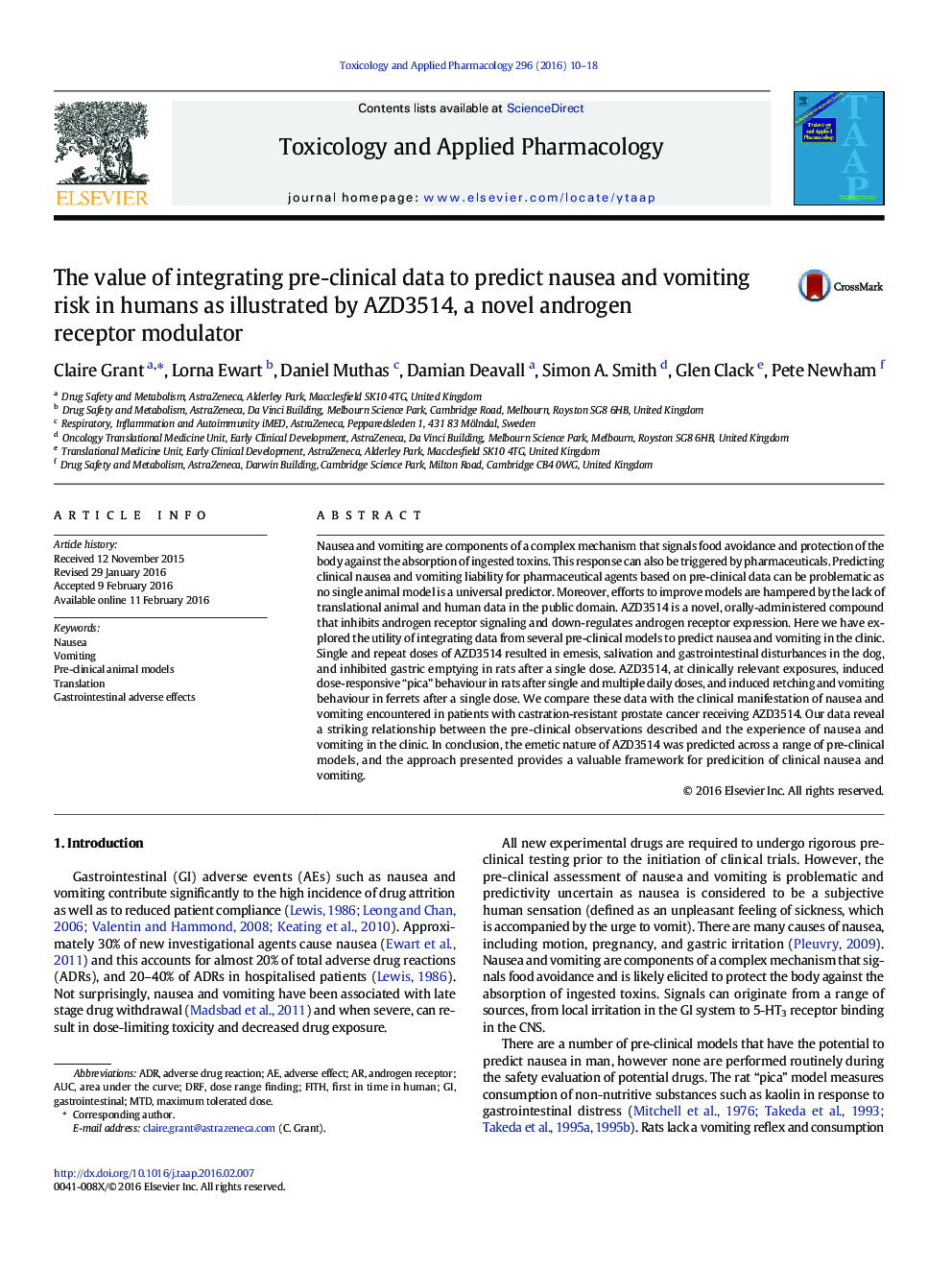| Article ID | Journal | Published Year | Pages | File Type |
|---|---|---|---|---|
| 2568186 | Toxicology and Applied Pharmacology | 2016 | 9 Pages |
•Integrated pre-clinical data can be used to predict clinical nausea and vomiting.•Data integrated from standard toxicology studies is sufficient to make a prediction.•The use of the nausea algorithm developed by Parkinson (2012) aids the prediction.•Additional pre-clinical studies can be used to confirm and quantify the risk.
Nausea and vomiting are components of a complex mechanism that signals food avoidance and protection of the body against the absorption of ingested toxins. This response can also be triggered by pharmaceuticals. Predicting clinical nausea and vomiting liability for pharmaceutical agents based on pre-clinical data can be problematic as no single animal model is a universal predictor. Moreover, efforts to improve models are hampered by the lack of translational animal and human data in the public domain. AZD3514 is a novel, orally-administered compound that inhibits androgen receptor signaling and down-regulates androgen receptor expression. Here we have explored the utility of integrating data from several pre-clinical models to predict nausea and vomiting in the clinic. Single and repeat doses of AZD3514 resulted in emesis, salivation and gastrointestinal disturbances in the dog, and inhibited gastric emptying in rats after a single dose. AZD3514, at clinically relevant exposures, induced dose-responsive “pica” behaviour in rats after single and multiple daily doses, and induced retching and vomiting behaviour in ferrets after a single dose. We compare these data with the clinical manifestation of nausea and vomiting encountered in patients with castration-resistant prostate cancer receiving AZD3514. Our data reveal a striking relationship between the pre-clinical observations described and the experience of nausea and vomiting in the clinic. In conclusion, the emetic nature of AZD3514 was predicted across a range of pre-clinical models, and the approach presented provides a valuable framework for predicition of clinical nausea and vomiting.
